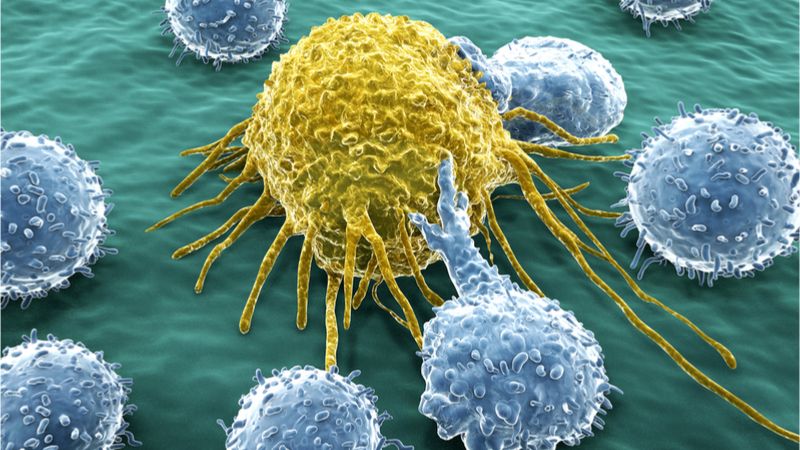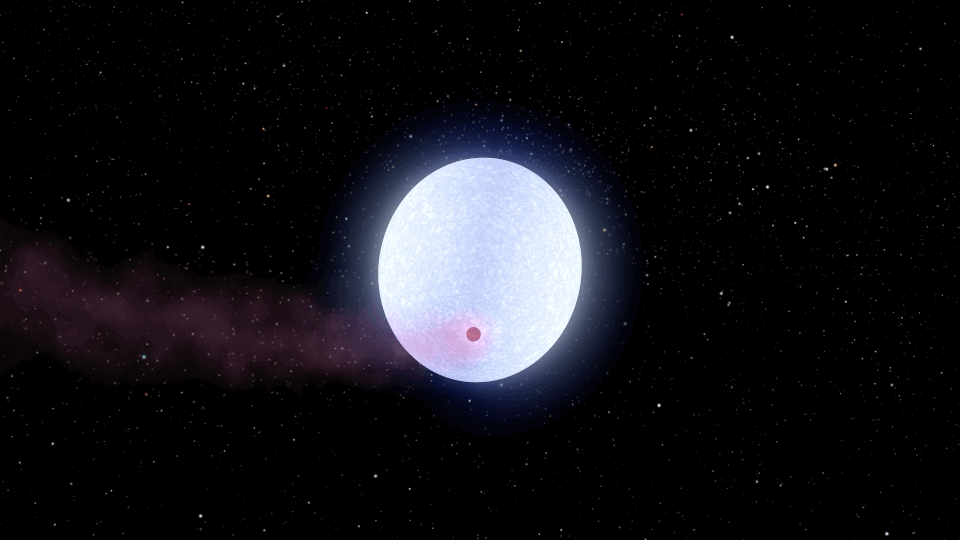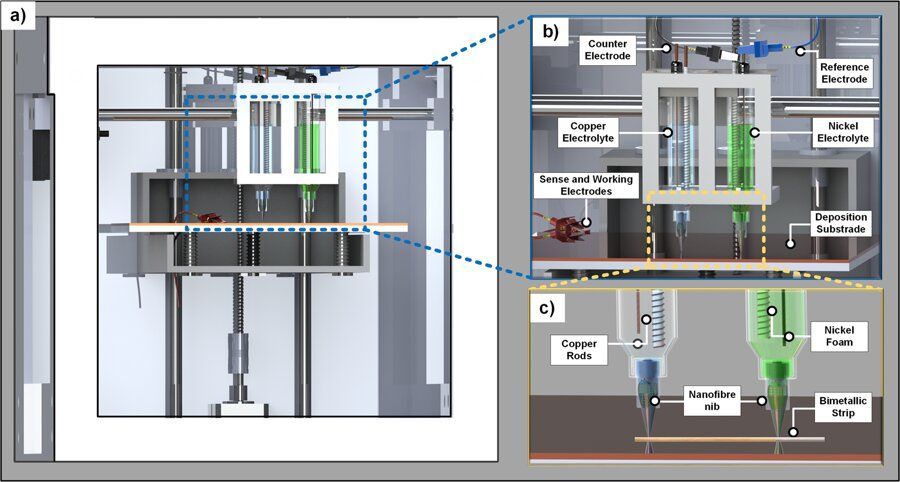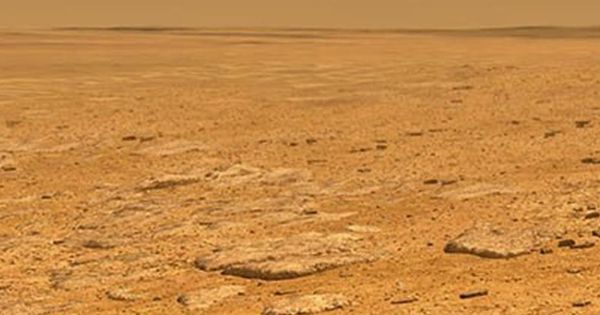Page 9011
Mar 15, 2019
An Immune System Clock to Predict Health and Longevity
Posted by Steve Hill in categories: biotech/medical, life extension
A new clock that analyzes the age of the immune system may be the next big thing in aging biomarkers.
Measuring the age of your immune system
As we age, our immune systems begin to decline due to many factors, including the thymus shrinking and producing ever-fewer T cells, the ever-increasing chronic inflammation called “inflammaging”, dysfunctional immune cells doing more harm than good, and a lifetime of microbial burden taking its toll. This gradual decline of the immune system is known as immunosenescence.
Continue reading “An Immune System Clock to Predict Health and Longevity” »
Researchers at NASA’s Jet Propulsion Laboratory in Pasadena, California, are cooking up an alien atmosphere right here on Earth. In a new study, JPL scientists used a high-temperature “oven” to heat a mixture of hydrogen and carbon monoxide to more than 2,000 degrees Fahrenheit (1,100 Celsius), about the temperature of molten lava. The aim was to simulate conditions that might be found in the atmospheres of a special class of exoplanets (planets outside our solar system) called “hot Jupiters.”
Hot Jupiters are gas giants that orbit very close to their parent star, unlike any of the planets in our solar system. While Earth takes 365 days to orbit the Sun, hot Jupiters orbit their stars in less than 10 days. Their close proximity to a star means their temperatures can range from 1,000 to 5,000 degrees Fahrenheit (530 to 2,800 degrees Celsius) or even hotter. By comparison, a hot day on the surface of Mercury (which takes 88 days to orbit the Sun) reaches about 800 degrees Fahrenheit (430 degrees Celsius).
“Though it is impossible to exactly simulate in the laboratory these harsh exoplanet environments, we can come very close,” said JPL principal scientist Murthy Gudipati, who leads the group that conducted the new study, published last month in the Astrophysical Journal.
Mar 15, 2019
4D printing multi-metal products with a desktop electrochemical 3D printer
Posted by James Christian Smith in categories: 3D printing, 4D printing, engineering
Four-dimensional (4D) printing can create complex 3D geometries that react to environmental stimuli, opening new design opportunities in materials science. A vast majority of 4D printing approaches use polymer materials, which limit the operational temperature during the process of engineering. In a recent study, Xiaolong Chen and co- workers at the Dyson School of Design and Engineering, Department of Earth Science and Engineering and Department of Materials at the Imperial College of London, U.K., developed a new multi-metal electrochemical 3D printer. The device was able to construct bimetallic geometries by selectively depositing different metals with temperature-responsive behavior programmed into the printed structure. In the study, they demonstrated a meniscus confined electrochemical 3D printing approach using a multi-print head design and nickel and copper materials as examples, the ability can be transferred to other deposition solutions. The results are now published in Scientific Reports.
Today’s Daily Dose of Science Tu Youyou won the 2015 Nobel Prize in Physiology and Medicine with her groundbreaking anti-malarial drug research, saving millions of lives. #womenshistorymonth
Born: 30 December 1930, Zhejiang Ningbo, China
Affiliation at the time of the award: China Academy of Traditional Chinese Medicine, Beijing, China
Mar 14, 2019
NASA is Everywhere: Farming Tech with Roots in Space
Posted by Michael Lance in categories: food, space
Today is National Agriculture Day! From enabling higher crop yields to maximizing every drop of water for farmers, NASA is working to help transform the agriculture industry. Check out some of the farming tools that have roots at NASA:
Growing plants can be tough, whether you’re on a spaceship or Earth. A special fertilizer made it easier for astronauts on the International Space Station and farmers down below, resulting in just one of the space program’s many contributions to agriculture.
Numerous farming tools have roots at NASA. Over the years, companies large and small have partnered with the agency, honed technologies and delivered innovations to benefit the industry. These are just a few examples:
Continue reading “NASA is Everywhere: Farming Tech with Roots in Space” »
Mar 14, 2019
Uranus smells like farts, astronomers have confirmed — and the discovery indicates there was ‘a big shakeup’ early in the solar system
Posted by Michael Lance in category: space
Uranus’ hydrogen-sulfide gas is also extremely toxic.
Scientists had suspected that Uranus had clouds of hydrogen sulfide, a compound that gives rotten eggs and flatulence their pungent smells. But researchers couldn’t be certain until new Gemini Observatory telescope observations.
Mar 14, 2019
National Aeronautics and Space Administration
Posted by Mary Jain in category: futurism
Mar 14, 2019
Looking For Life On Mars? Go Underground, Say Scientists
Posted by Bill Retherford in category: alien life
Mar 14, 2019
Harvard University uncovers DNA switch that controls genes for whole-body regeneration
Posted by Genevieve Klien in categories: biotech/medical, life extension
Humans may one day have the ability to regrow limbs after scientists at Harvard University uncovered the DNA switch that controls genes for whole-body regeneration.
Some animals can achieve extraordinary feats of repair, such as salamanders which grow back legs, or geckos which can shed their tails to escape predators and then form new ones in just two months.
Planarian worms, jellyfish, and sea anemones go even further, actually regenerating their entire bodies after being cut in half.

















